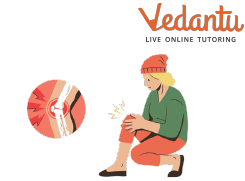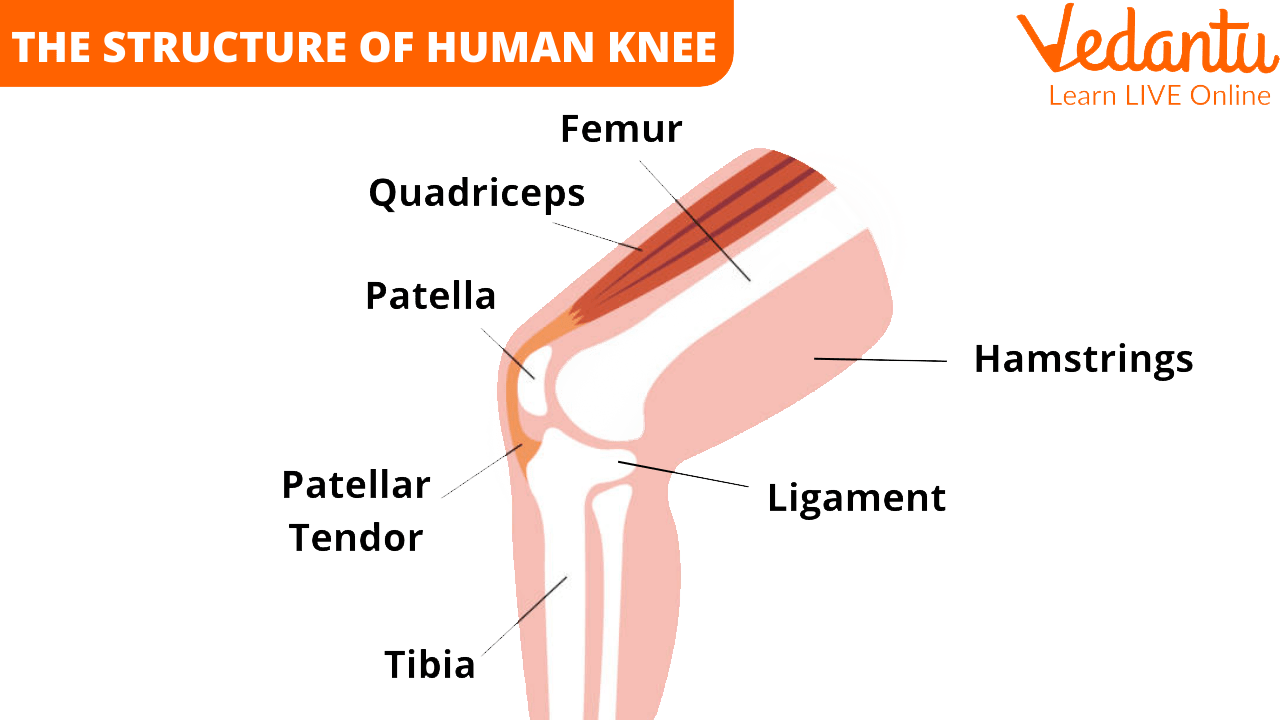




The Structure and Function of the Human Knee Bone
The human knee bone is a joint located midway between our legs. The knee bone is located between two major bones in the human body. This joint is the connecting point for many muscles that help us move, walk, and run. Let us understand more about the human knee and its structure.
The Human Knee Bone
The human knee is the largest joint in the body. What is a joint? A joint is the meeting point of two bones. You can fold your leg or straighten your leg only because of it. The knee helps support the body's weight.

Knee
The Structure of the Human Knee

Diagram of the Knee
Now that you have learnt about the knee let us understand the human knee structure. The knee joint is formed by joining two large bones of the leg: the femur and tibia. The ligaments are strong strands of tissue in every joint and connect one bone to another. So, the femur and tibia are connected due to ligaments.
To prevent friction in the joint due to rubbing against each other, there is a cushion-like tissue called the cartilage cushions at the ends of each bone. The femur is protected from the front by a small patella bone. This is the same roundish bone you can see when you fold your legs. The patella is also known as the kneecap, which sits on the knee like a cap.
A large group of muscles are joined together at the knee. These muscles help in straightening the leg.
How Does the Knee Work?
Let us understand how the knee joint acts like the hinges of a door, which is why it is called a hinge joint. But this joint can also rotate slightly. The contraction or the squeezing of the muscles in the front of the thigh causes the leg to straighten, and the contraction of the muscles in the back of the thigh helps us bend the knee.
When the muscles contract, they pull the tendons connected to them. This, in turn, pulls the kneecap, thereby extending the knee. When the leg is bent, the hamstring muscles, which are present in the back of the thighs, pull the tibia bone backwards. Injury to these muscles can sometimes affect the movement of the legs too. The human knee joints of kids differ from adults as the kids' knees are much more flexible than adults' due to slight differences in chemical composition.
Functions of the Knee
The functions of the knee are as follows:
The knee joint is one of the essential parts of the human body as it helps in motion. It allows a person to move from one place to another.
The knee is also responsible for bearing the body's weight while we stand, run, walk, etc. This is why our knees are essential and must be taken care of.
The knees also help us to fold our legs and sit in a cross-legged posture.
Facts Related to the Knee
Every person has a unique kneecap.
The knees of a human being are one of the most used joints.
The knees are dependent on 10 muscles for their functioning.
Wearing uncomfortable shoes can cause damage to the knees.
Babies are born without a kneecap.
Conclusion
In this article, we have learnt about the knee joint in humans, its functions, the anatomy or structure of the knee, the workings of the knee, and the facts related to the knee. We have also learnt about the various structures related to the knee, such as muscles, tendons, and cartilage.
FAQs on The Function of the Knee
1. What are the primary functions of the knee joint in the human body?
The knee joint is essential for movement and stability. Its main functions are:
- Supporting Weight: It bears a significant portion of the body’s weight, especially during activities like standing, walking, and running.
- Allowing Movement: It enables the leg to bend (flexion) and straighten (extension), which is crucial for most lower body movements.
- Absorbing Shock: The knee acts as a shock absorber, cushioning the impact on the legs and spine when you walk, run, or jump.
- Providing Stability: It helps in maintaining balance and providing a stable base for the body.
2. What are the main parts that make up the knee joint?
The knee is a complex joint made up of several key parts working together:
- Bones: Three bones meet at the knee: the femur (thigh bone), the tibia (shin bone), and the patella (kneecap).
- Cartilage: A smooth, slippery substance called articular cartilage covers the ends of the femur and tibia, allowing them to glide over each other with minimal friction. The menisci are two C-shaped pieces of cartilage that act as shock absorbers between these bones.
- Ligaments: These are strong, fibrous bands that connect bones to each other and provide stability. The main ones are the ACL, PCL, MCL, and LCL.
- Synovial Fluid: This is a thick fluid that lubricates the joint, further reducing friction and nourishing the cartilage.
3. Why is the knee classified as a hinge joint?
The knee is classified as a hinge joint because, like the hinge on a door, its primary movement is in one direction. It allows the leg to swing back and forth (bending and straightening) along one plane. While it does allow for a small amount of rotation, its main function of flexion and extension is what gives it this classification, providing stability for forward movement like walking and running.
4. What is synovial fluid and what is its importance in the knee?
Synovial fluid is a thick, viscous liquid located within the knee joint capsule. It is critically important for two main reasons:
- Lubrication: It acts like engine oil for the joint, allowing the cartilage-covered ends of the bones to glide smoothly against each other. This minimises friction and prevents wear and tear.
- Shock Absorption: Along with cartilage, it helps to cushion the joint by absorbing shock during high-impact activities such as jumping or running.
5. Why can the knee bend backward but not forward beyond a straight position?
The knee's range of motion is limited by its anatomy. It can bend backward (flexion) easily, but it cannot bend forward (hyperextend) due to two main factors:
- Bone Structure: The shape of the femur and tibia where they meet physically blocks movement beyond a straight line.
- Ligament Tension: Strong ligaments, particularly the Anterior Cruciate Ligament (ACL) and Posterior Cruciate Ligament (PCL), become taut when the leg is straight, acting like strong ropes that prevent the knee from bending the wrong way.
6. How does the knee's structure support daily activities like walking and climbing stairs?
The knee's structure is perfectly designed for common activities. During walking, the hinge-like motion provides a smooth and efficient gait. When climbing stairs, the knee must perform complex tasks: it bends to place the foot on the step, then uses powerful muscles to extend and lift the entire body's weight. The patella (kneecap) plays a key role here by improving the leverage of the thigh muscles.
7. What crucial role do ligaments play in keeping the knee stable?
Ligaments are the primary stabilisers of the knee, acting like strong tethers that connect the femur to the tibia. They prevent the bones from moving too much or in the wrong direction. The four main ligaments control specific movements:
- The collateral ligaments (MCL and LCL) on the sides of the knee prevent it from buckling sideways.
- The cruciate ligaments (ACL and PCL) inside the knee cross over each other to prevent the shin bone from sliding too far forward or backward.
Without these, the knee would be very wobbly and unstable.
8. What are some common ways people can keep their knees healthy?
Maintaining knee health involves several lifestyle habits:
- Maintain a Healthy Weight: Excess weight puts significant extra pressure on the knee joints, increasing wear and tear.
- Strengthen Supporting Muscles: Exercises that strengthen the quadriceps and hamstrings provide better support for the knee.
- Choose Low-Impact Exercise: Activities like swimming and cycling are excellent for fitness without stressing the knees.
- Stretch Regularly: Keeping the muscles around the knee flexible can help prevent injury.









